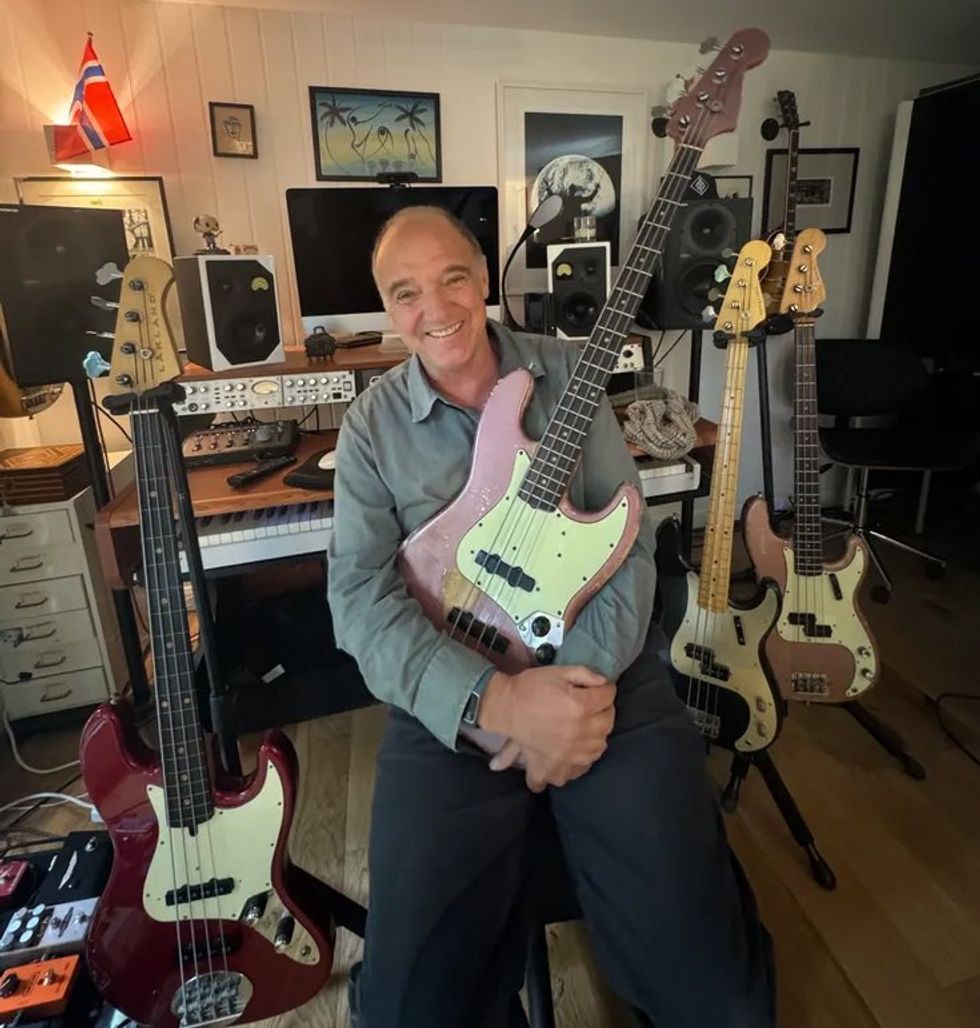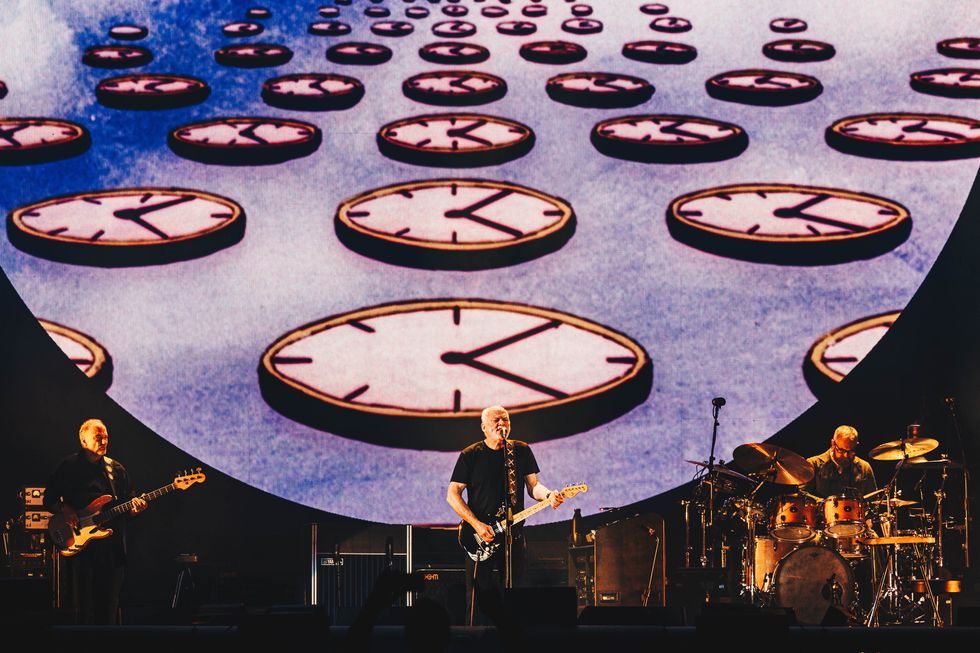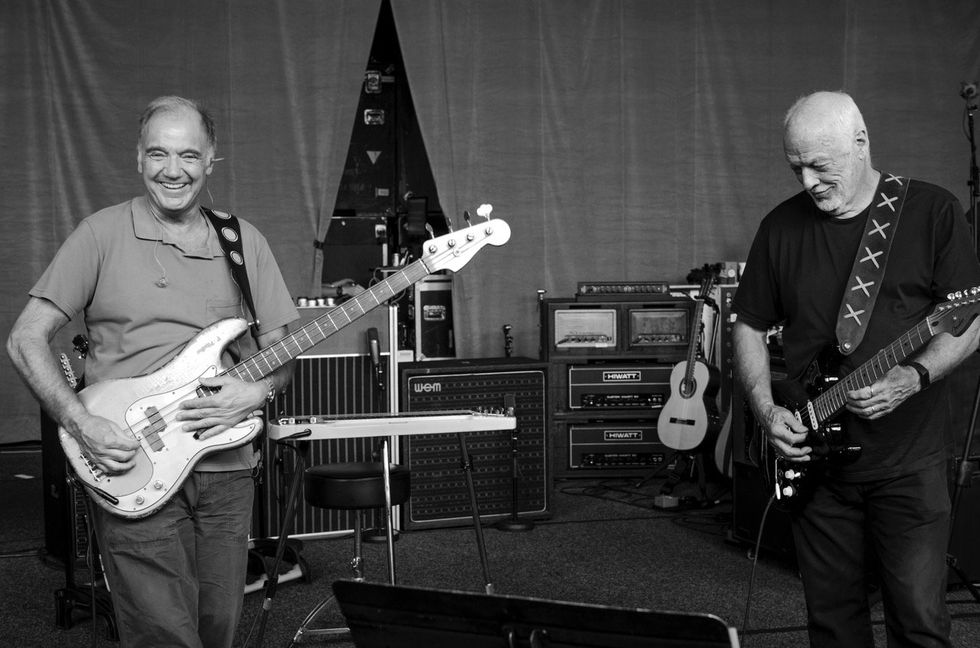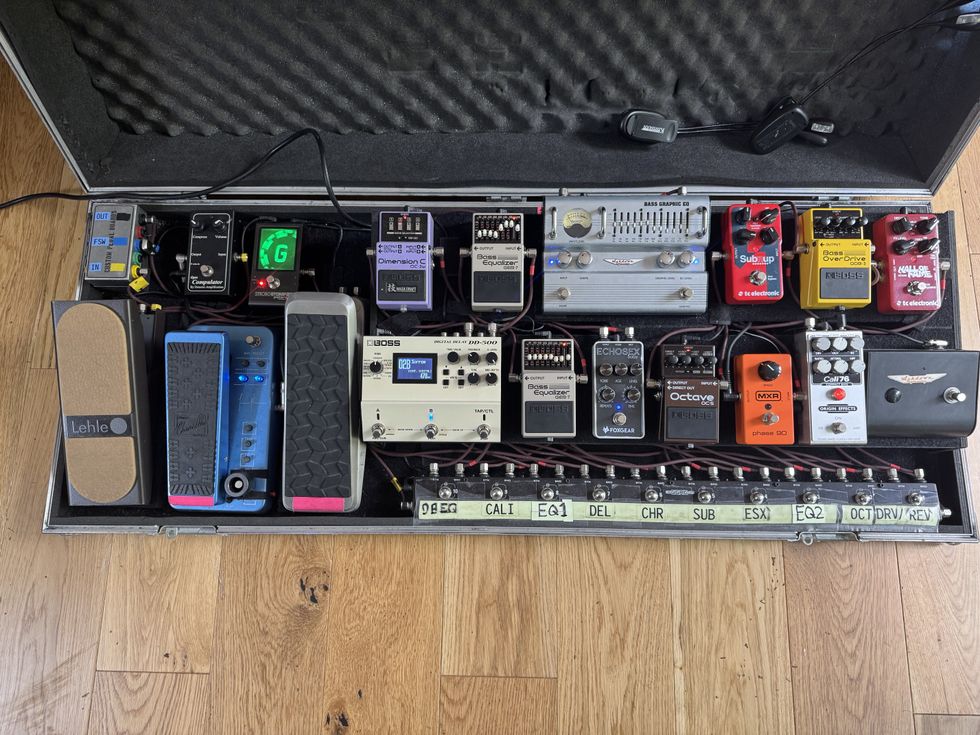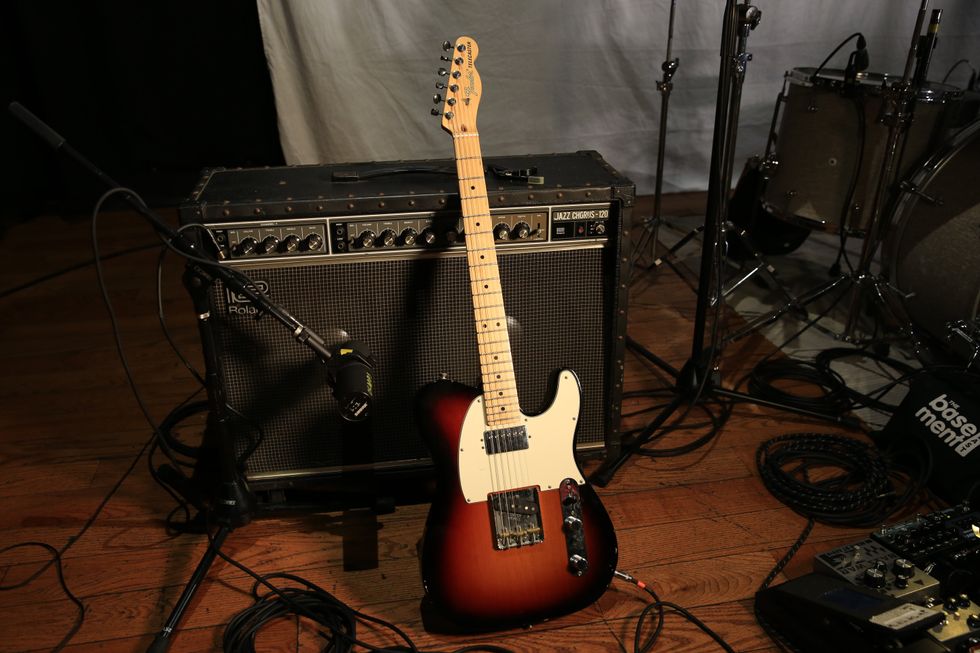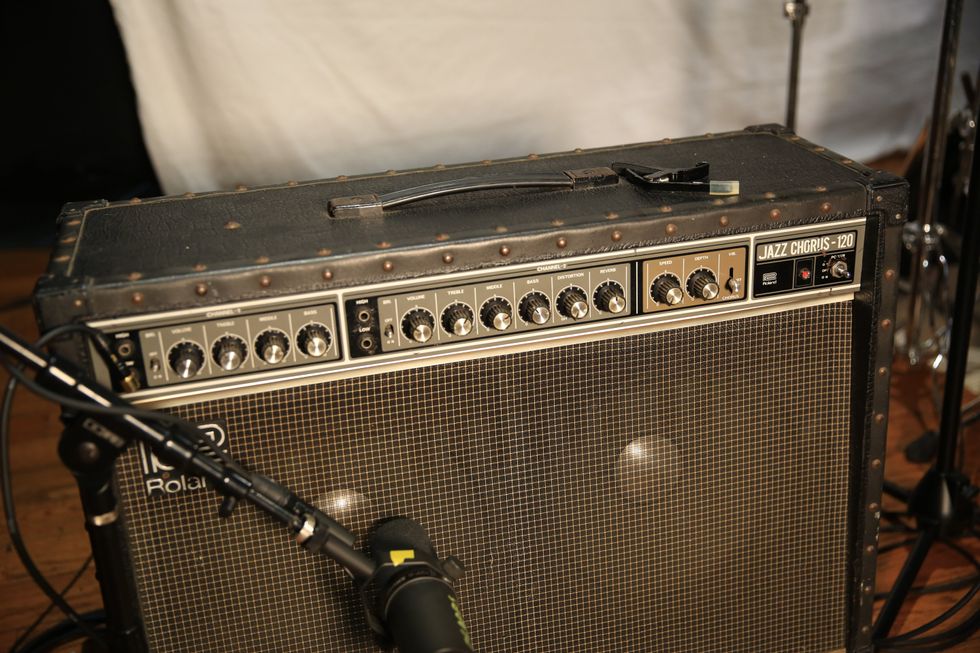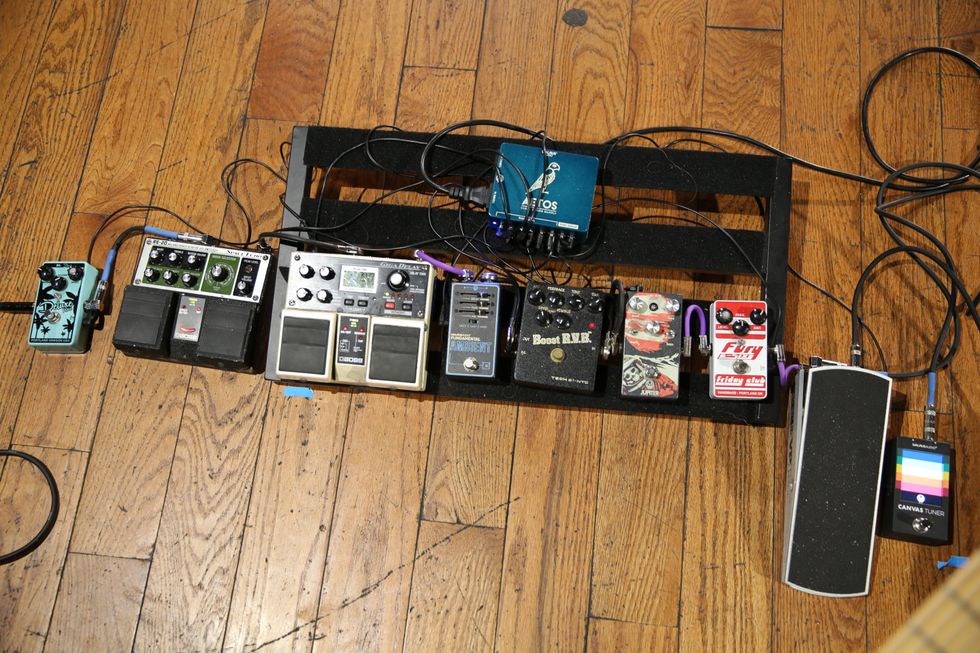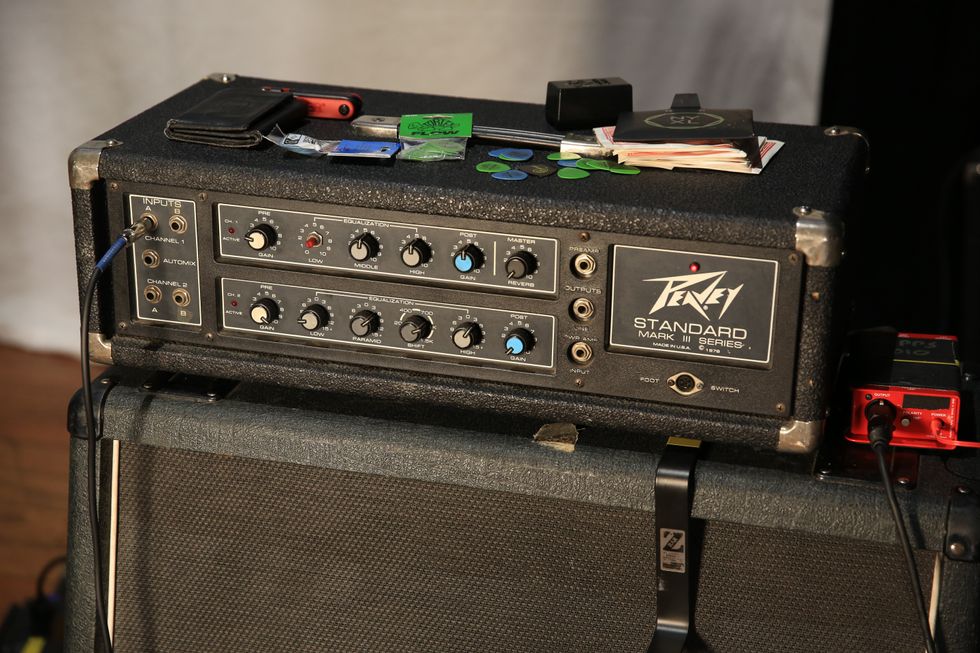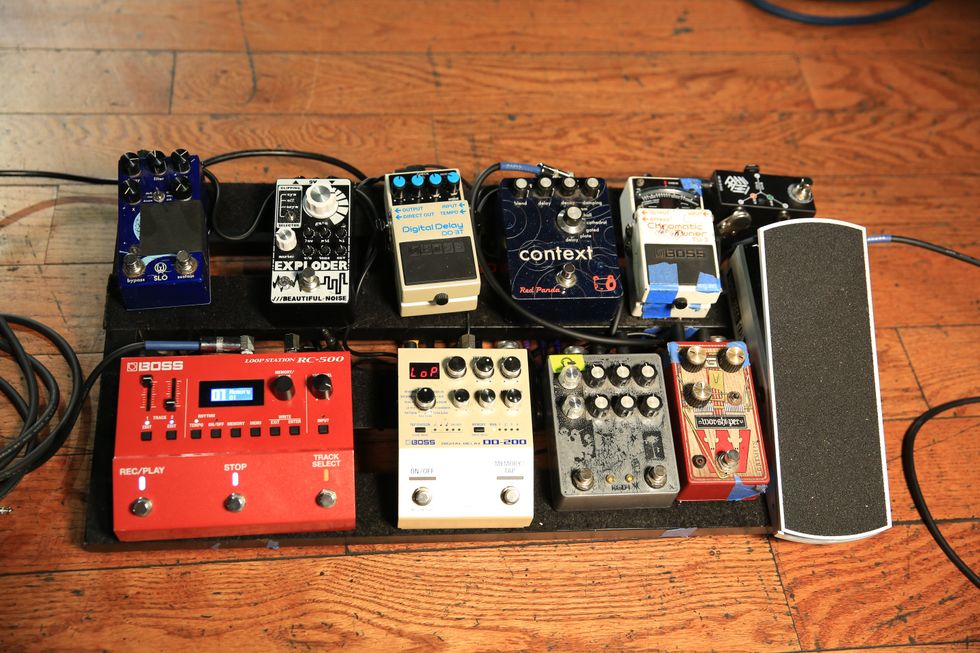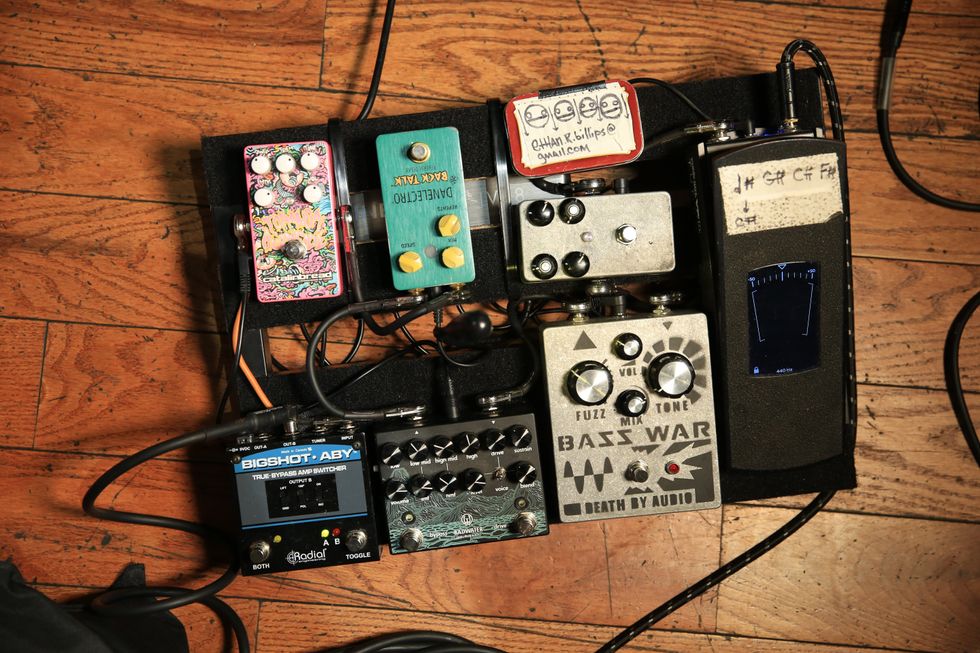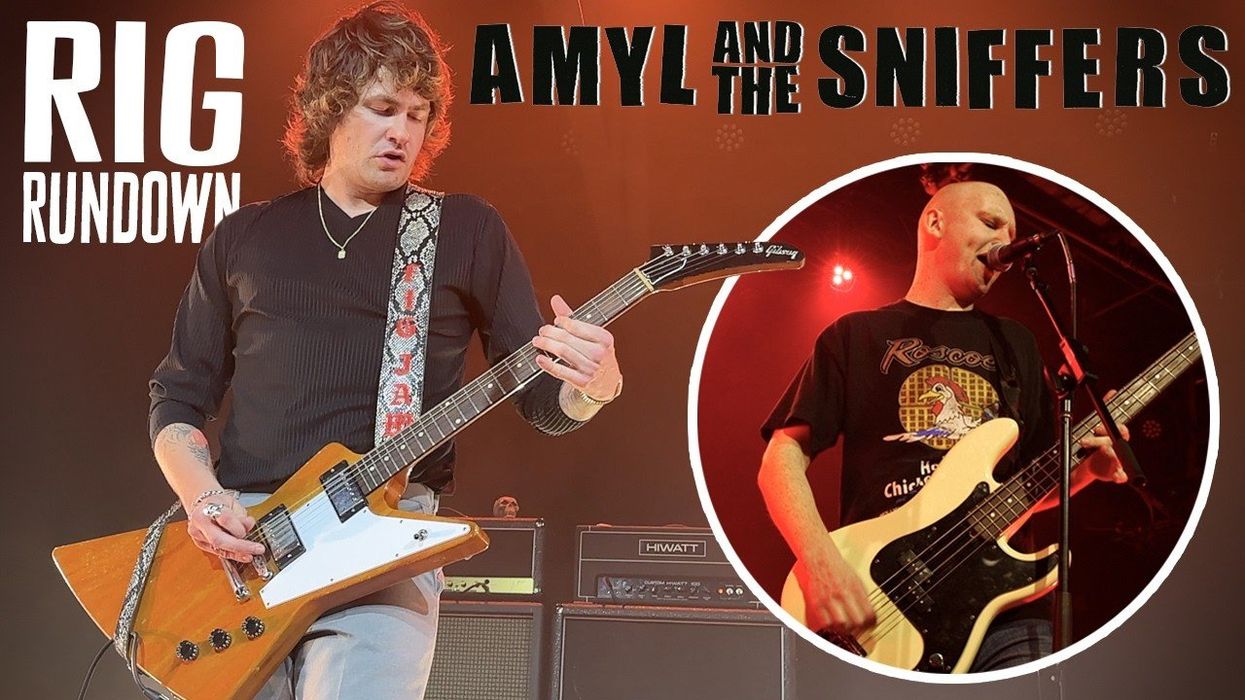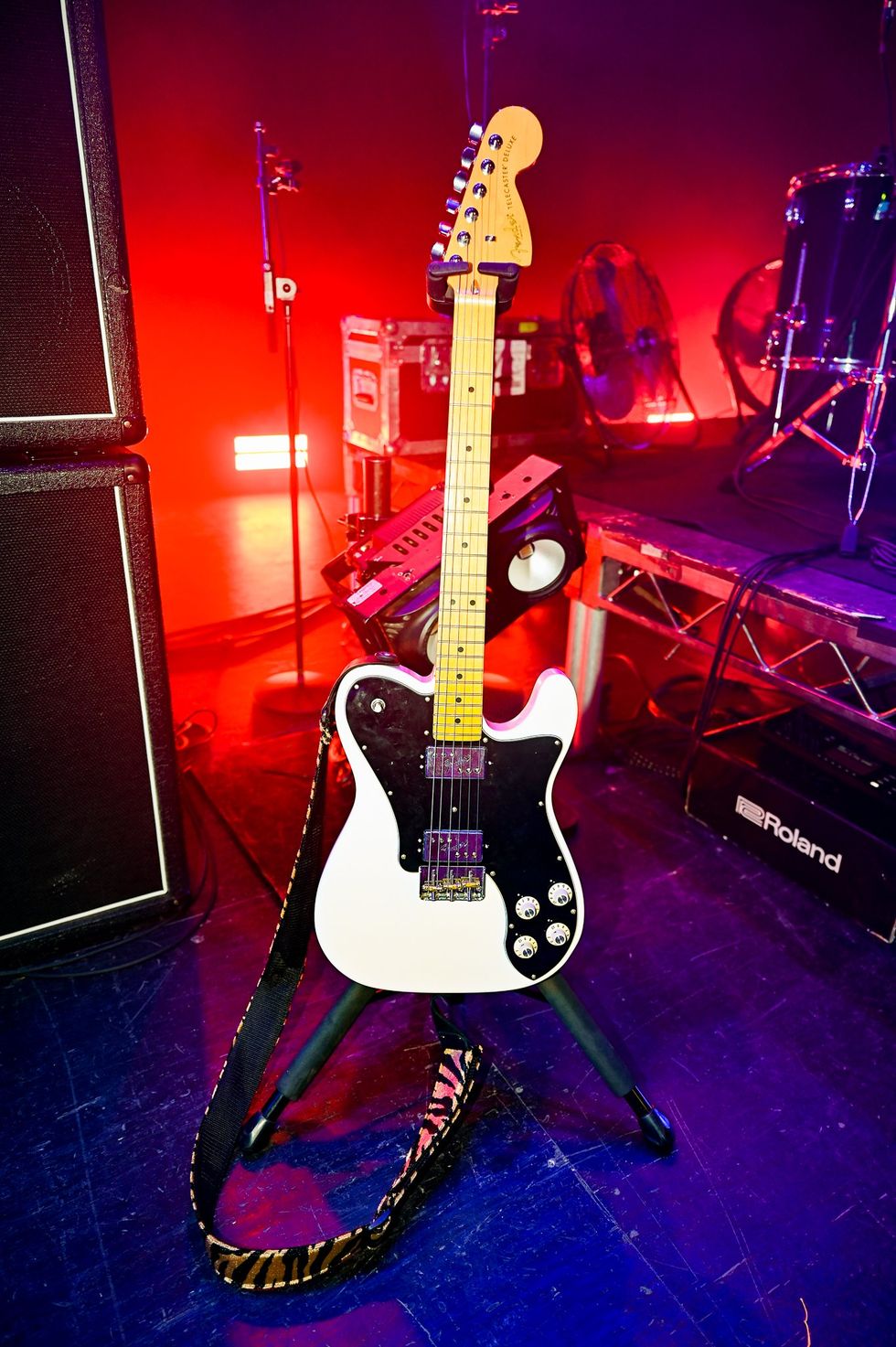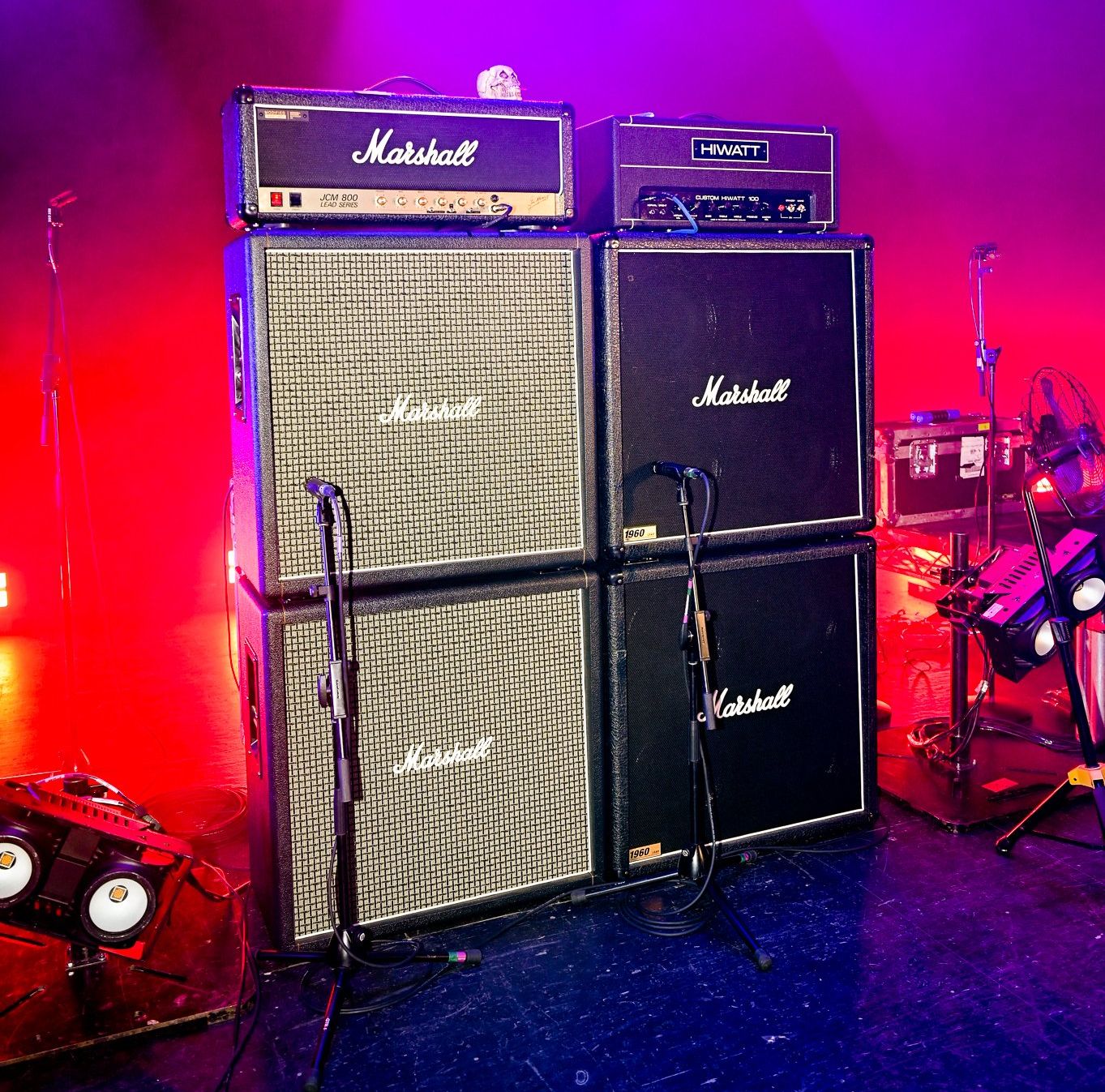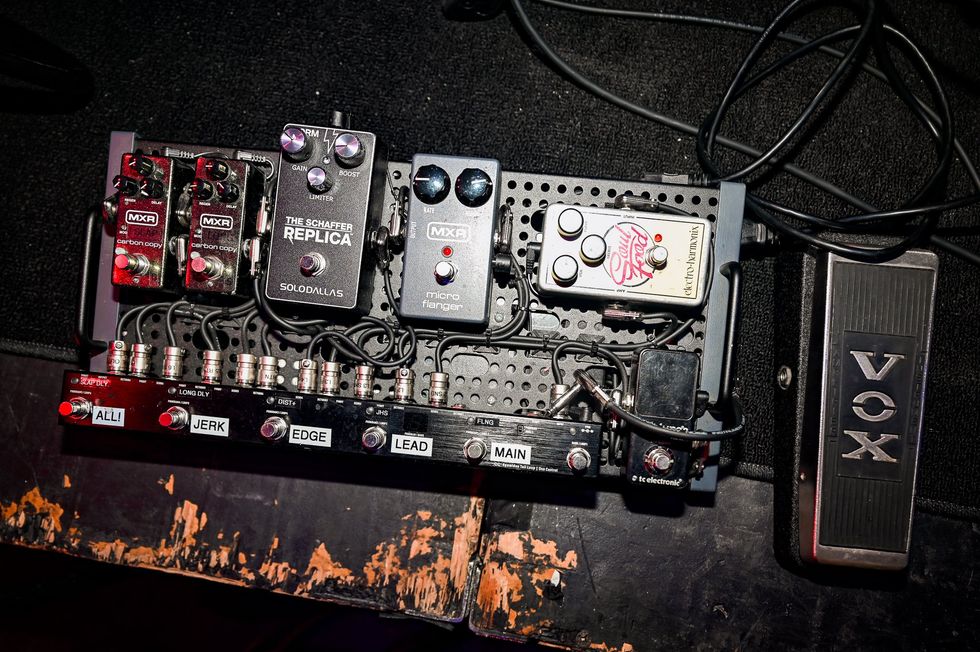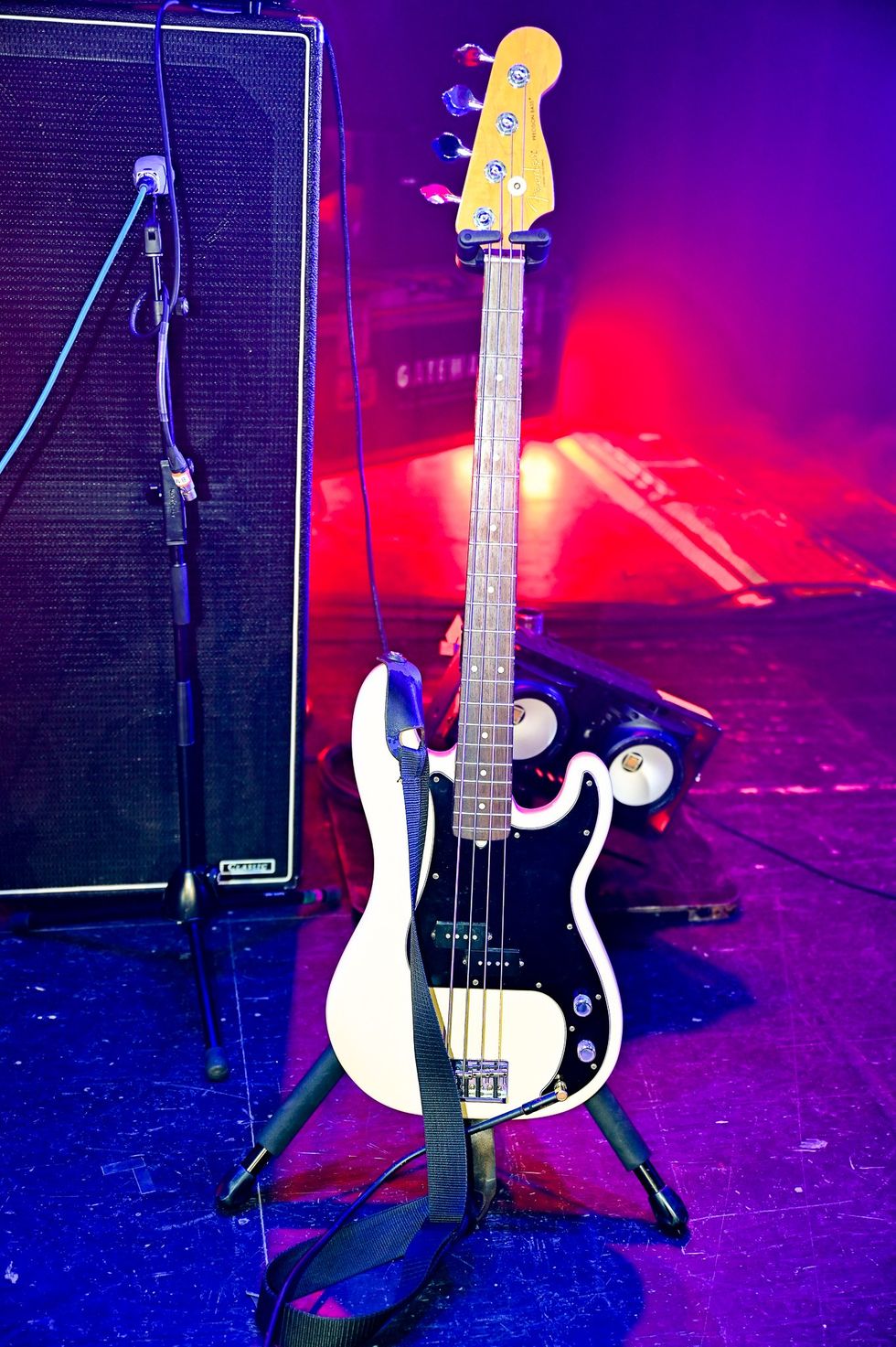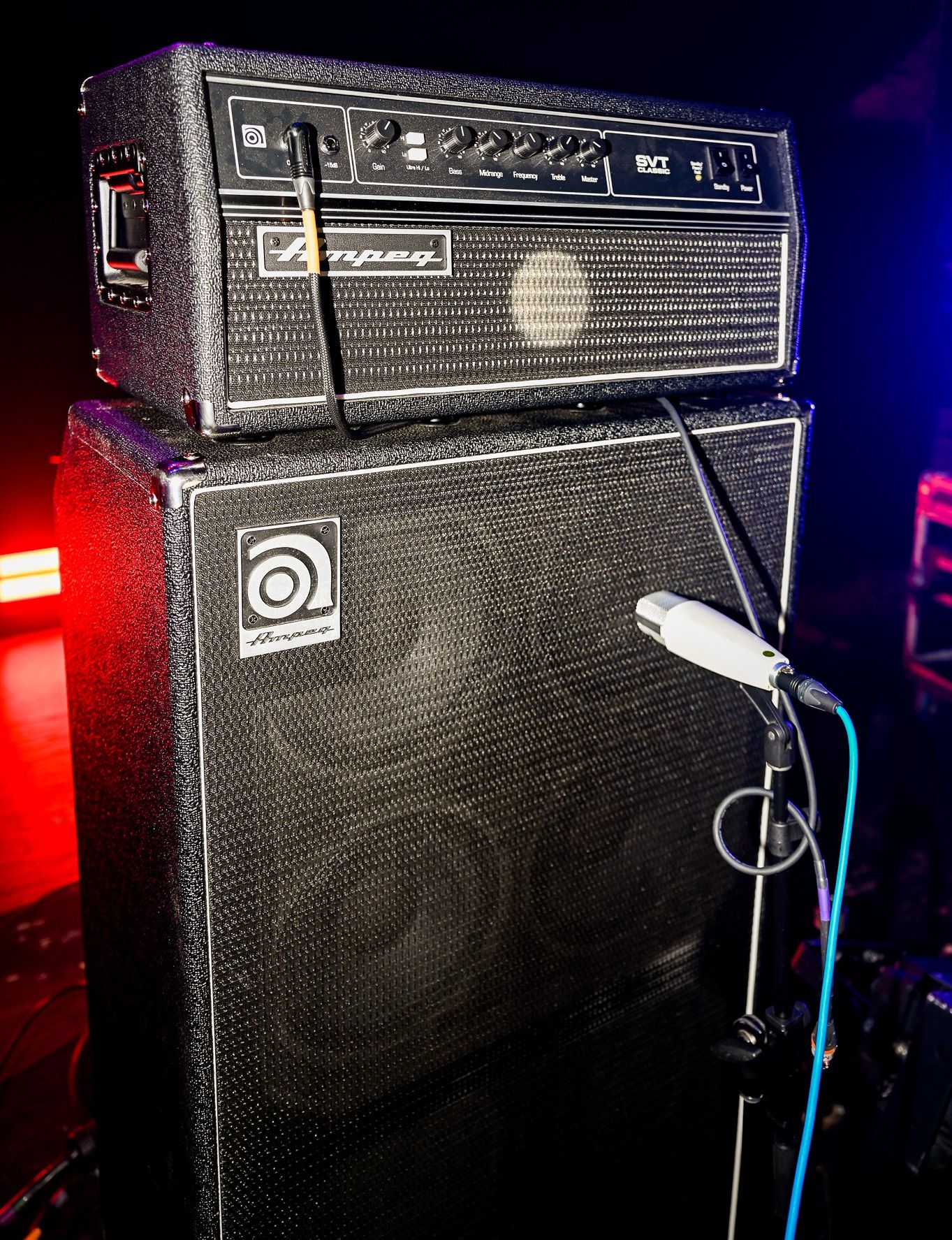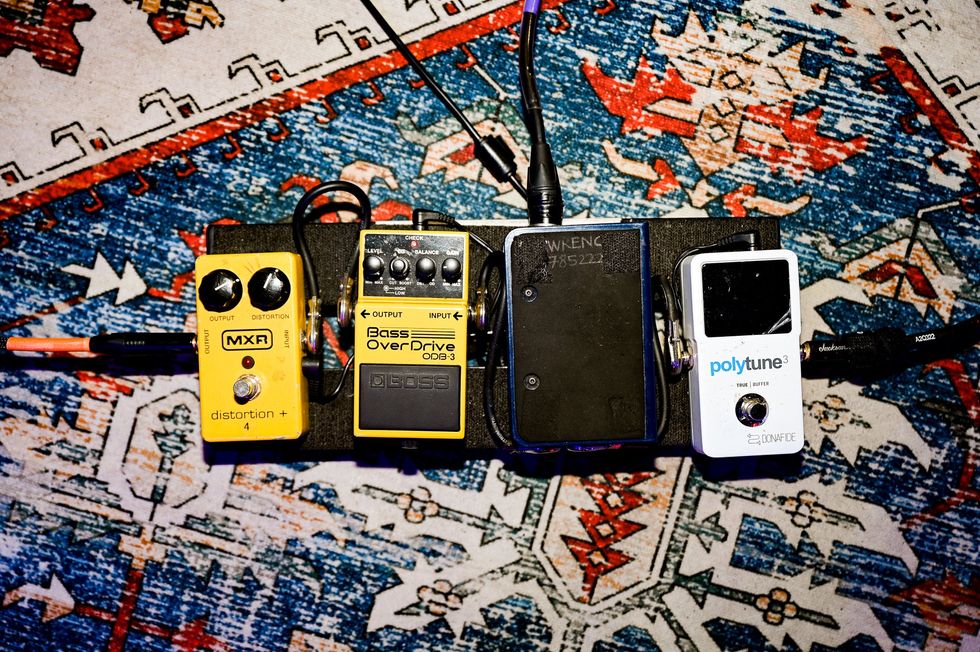Scottsdale, AZ (January 22, 2015) -- The Fender Custom Shop is proud to announce the 2015 Collection for the 2015 NAMM Show.
2015 Limited Edition Tele Caballo Tono (Tone Horse Tele)
The 2015 Limited Edition Tele Caballo Tono presents a fresh take on Fender’s original workhorse tone machine. Its name translates to “Tone Horse Tele,” and there is indeed a great deal of horsepower here, courtesy of a TV Jones Classic neck pickup, a hand-wound Texas Tele bridge pickup and a Greasebucket™ tone circuit, which rolls off highs without reducing gain. It’s a dark horse too, with a Black lacquer finish on its lightweight alder body and the aged-and-worn Relic treatment to impart the look of authentic wear and tear.
Other premium features include a quartersawn AAA flame maple neck with a highly worn heavy-Relic treatment, 9.5”-radius maple fingerboard with 21 narrow jumbo frets, distinctive Cabronita pickguard and reverse control plate (pickup switch placed behind control knobs), rock-solid Custom Shop RSD bridge, Sperzel tuning machines with pearl buttons, and Schaller strap locks. Black LTD case included.
2015 Limited Edition 1955 Stratocaster
The 2015 Limited Edition 1955 Stratocaster takes you straight back to the instrument’s original era, with a lightweight ash body in Dirty White Blonde or Two-Color Sunburst lacquer Relic finishes that evoke years of hard-fought wear and tear. The sparkling trio of hand-wound ’55 single-coil Stratocaster pickups is mounted on a single-ply eight-hole white pickguard, with five-way switching for modern tonal versatility.
Other premium features include a quartersawn maple neck with highly worn Heavy Relic treatment on the back, 9.5”-radius maple fingerboard with 21 narrow jumbo frets, rock-solid American Vintage synchronized tremolo bridge, American Vintage tuning machines and a Custom Shop Limited Edition neck plate. Includes blonde LTD case containing a 1955 Fender Downbeat catalog insert reproduction.
2015 Limited Edition 1955 Esquire
The 2015 Limited Edition 1955 Esquire is a peerlessly crafted take on the single-pickup classic that preceded even the Telecaster in Fender history. Everything about the instrument takes you back to that original era, with a lightweight ash body in Dirty White Blonde or Two-Color Sunburst lacquer Relic body finishes that evoke long years of wear and tear. Authentic Esquire snap comes from its hand-wound ’55 Telecaster single-coil bridge pickup with staggered/beveled polepieces, and, in a special touch, the guitar comes with a neck pickup conversion kit containing a ’55 Telecaster single-coil neck pickup, pickguard and control assembly should you prefer dual-pickup tone and performance.
Other premium features include a quartersawn maple neck with “soft V” profile and highly worn Heavy Relic treatment on the back, 9.5”-radius maple fingerboard with 21 narrow jumbo frets, three-way tone/pickup switch with black “top hat” tip, single-ply five-hole white pickguard, ’55 Telecaster bridge with ¼” steel saddles, American Vintage tuning machines and a Custom Shop Limited Edition neck plate. Includes blonde LTD case containing a 1955 Fender Downbeat catalog insert reproduction.
2015 Limited Edition 1955 Precision Bass
The 2015 Limited Edition 1955 Precision Bass gives you a magnificently crafted original-era version of the bass that started it all. Its lightweight ash body is sculpted with comfortable body and forearm contours, and comes in Dirty White Blonde or Two-Color Sunburst lacquer Relic body finishes that evoke the wear and aging of decades of frequent use (and occasional abuse). Its muscular blunt-force tone comes from a hand-wound ’55 Precision Bass single-coil pickup with a classic chrome cover.
Other premium features include a quartersawn maple neck with a highly worn Heavy Relic treatment on the back, 7.25”-radius maple fingerboard with 20 vintage-style frets, single-ply seven-hole white pickguard, authentic reproduction bridge with chrome cover, American Vintage tuning machines and Custom Shop Limited Edition neck plate. Includes blonde LTD case containing a 1955 Fender Downbeat catalog insert reproduction.
2015 American Custom Telecaster
The Fender Custom Shop 2015 American Custom Telecaster takes a double-bound early-’60s classic and decks it out with knockout appointments that make it a dazzling performer. The two-piece lightweight alder body comes in Three-Color Sunburst, Black and Faded Lake Placid Blue finishes with parchment top and back body binding and an NOS treatment that evokes the look of a brand-new instrument in its original model year. Scorching Telecaster snap comes from a pair of hand-wired Twisted Tele single-coil pickups and Fender’s Greasebucket tone circuit, which rolls off highs without reducing gain.
Other premium features include an AAA flame maple neck with “large C” profile, fast compound-radius (9.5”-12”) maple or dark rosewood “slab” fingerboard with bone nut and 22 narrow jumbo frets, three-way pickup switch with black “top hat” tip, three-ply eight-hole parchment pickguard, custom deluxe Telecaster bridge, and Elite chrome tuners with pearl buttons. Includes black textured vinyl hard-shell case.
2015 American Custom Telecaster FM
The Fender Custom Shop 2015 American Custom Telecaster FM takes a double-bound early-’60s classic and decks it out with knockout appointments that make it a dazzling performer. The two-piece lightweight ash body has a gorgeous two-piece book-matched AAA flame maple top, with parchment top and back body binding. The guitar comes in elegant Violin Burst or Honey Burst finishes with an NOS treatment that evokes the look of a brand-new instrument in its original model year. Scorching Telecaster snap comes from a pair of hand-wired Twisted Tele single-coil pickups and Fender’s Greasebucket tone circuit, which rolls off highs without reducing gain.
Other premium features include an AAA flame maple neck with “large C” profile, fast compound-radius (9.5”-12”) maple or dark rosewood “slab” fingerboard with bone nut and 22 narrow jumbo frets, three-way pickup switch with black “top hat” tip, three-ply eight-hole parchment pickguard, custom deluxe Telecaster bridge, and Elite chrome tuners with pearl buttons. Includes black textured vinyl hard-shell case.
2015 American Custom Stratocaster
The Fender Custom Shop 2015 American Custom Stratocaster takes the quintessential Fender electric guitar and decks it out with knockout appointments that make it a dazzling performer. The two-piece lightweight alder body is sculpted with deep ’57-style contours for remarkable playing comfort, and comes in Two-Color Sunburst, Black and Shoreline Gold finishes with an NOS treatment that evokes the look of a brand-new instrument in its original model year. Singing Strat sparkle comes from hand-wired ’69 Stratocaster single-coil neck and middle pickups (middle pickup is reverse wound/reverse polarity) and a hand-wired Texas Special single-coil bridge pickup.
Other premium features include an AAA flame maple neck with “large C” profile and ’57-style small headstock; fast compound-radius (9.5”-12”) maple or dark rosewood “slab” fingerboard with rolled edges, bone nut and 22 narrow jumbo frets; five-way pickup switch; three-ply 11-hole parchment pickguard with countersunk pickup- and switch-mounting holes; vintage white control knobs and switch tip; custom deluxe tremolo bridge; and Elite chrome tuners with pearl buttons. Includes black textured vinyl hard-shell case.
2015 American Custom Stratocaster FM
The Fender Custom Shop 2015 American Custom Stratocaster FM takes the quintessential Fender electric guitar and decks it out with knockout appointments that make it a dazzling performer. The two-piece lightweight ash body is sculpted with deep ’57-style contours for remarkable playing comfort, with a gorgeous two-piece book-matched AAA flame maple top. The guitar comes in Violin Burst and Honey Burst finishes with an NOS treatment that evokes the look of a brand-new instrument in its original model year. Singing Strat sparkle comes from hand-wired ’69 Stratocaster single-coil neck and middle pickups (middle pickup is reverse wound/reverse polarity) and a hand-wired Texas Special™ single-coil bridge pickup.
Other premium features include an AAA flame maple neck with “large C” profile and ’57-style small headstock, fast compound-radius (9.5”-12”) maple or dark rosewood “slab” fingerboard with bone nut and 22 narrow jumbo frets, five-way pickup switch, three-ply 11-hole parchment pickguard with countersunk pickup- and switch-mounting holes, vintage white control knobs and switch tip; custom deluxe tremolo bridge, and Elite chrome tuners with pearl buttons. Includes black textured vinyl hard-shell case.
2015 Postmodern Stratocaster
The 2015 Postmodern Stratocaster is elegantly designed with a reappraisal of modern assumptions. A thoroughly contemporary take on a time-honored classic, it has a lightweight ash body with a comfortably contoured heel, a quartersawn maple neck with a finely sculpted ’60s “C” profile, a fast compound-radius (9.5”-12”) “round-laminated” maple or rosewood fingerboard with 21 narrow jumbo frets, and three sparkling Fat ’60s single-coil pickups with modern five-way switching and a special “Tone-Saver” treble-bleed network that keeps tone consistent at any volume (no loss of highs when decreasing volume).
Other premium features include a three-ply parchment pickguard, American Vintage synchronized tremolo bridge, staggered tuning machines (no string tree), Schaller strap locks and Fender “F” logo engraved neck plate. Available in Black, Olympic White, Dakota Red and Three-Color-Sunburst NOS and new “Journeyman” Relic lacquer finishes, the latter of which imparts the appearance of years of aging and light use without heavy wear and tear. Includes black textured vinyl hard-shell case.
2015 Postmodern Telecaster
The 2015 Postmodern Telecaster is elegantly designed with a reappraisal of modern assumptions. A thoroughly contemporary take on a time-honored classic, it has a lightweight ash body with a comfortably contoured heel, a quartersawn maple neck with a finely sculpted ’60s “C” profile, a fast compound-radius (9.5”-12”) “round-laminated” maple or rosewood fingerboard with 21 narrow jumbo frets, and dual Twisted Tele pickups with three-way switching and Greasebucket tone circuit, which rolls off highs without reducing gain.
Other premium features include a three-ply parchment pickguard, Custom Shop RSD bridge, American Vintage tuning machines, Schaller strap locks and Fender “F” logo engraved neck plate. Available in Black, Dakota Red and Aged White Blonde NOS and new “Journeyman” Relic lacquer finishes, the latter of which imparts the appearance of years of aging and light use without heavy wear and tear. Includes black textured vinyl hard-shell case.
2015 Postmodern Precision Jazz Bass
The 2015 Postmodern Precision Jazz Bass is elegantly designed with a reappraisal of modern assumptions. A thoroughly contemporary combination of Fender’s two most time-honored basses, it has a lightweight alder Precision Bass body with a comfortably contoured heel, a quartersawn maple Jazz Bass neck with a finely sculpted ’60s “U” profile, a 7.25”-radius “round-laminated” rosewood fingerboard with 20 medium jumbo frets, and a seismic ’63 Precision bass split single-coil pickup with a vintage-style chrome cover.
Other premium features include a three-ply parchment pickguard (three-ply tortoiseshell pickguard on Three-Color Sunburst model), Custom Shop string-through-body RSD bridge, American Deluxe tuning machines and “Stealth” A-string retainer, Schaller strap locks and Fender “F” logo engraved neck plate. Available in Olympic White, Dakota Red and Three-Color Sunburst NOS and new “Journeyman” Relic lacquer finishes, the latter of which imparts the appearance of years of aging and light use without heavy wear and tear. Includes black textured vinyl hard-shell case.
1959 Journeyman Relic Precision Bass
The Custom Shop 1959 Journeyman Relic Precision Bass takes you straight back to the original era of the bass that started it all. Its two-piece ash body comes in Vintage Blonde or Faded Three-Color Sunburst “Journeyman” Relic lacquer finishes, which impart the appearance of years of aging and light use without heavy wear and tear. The quartersawn maple neck has a carefully sculpted ’60s “oval C” profile and a highly worn Heavy Relic treatment on the back, topped by a 7.25”-radius rosewood fingerboard with 20 vintage frets.
Other premium features include a ’59-’62 Precision Bass split single-coil pickup with chrome cover, gold anodized aluminum pickguard, authentic reproduction bridge with chrome cover, and American Vintage tuning machines. Includes brown textured vinyl hard-shell case with gold interior.
1960 Journeyman Relic Jazz Bass
The Custom Shop 1960 Journeyman Relic Jazz Bass transports you to the debut year of Fender’s most popular bass guitar model. Its two-piece alder body comes in Aged Olympic White or Three-Color Sunburst “Journeyman” Relic lacquer finishes, which impart the appearance of years of aging and light use without heavy wear and tear. The quartersawn maple neck has a carefully sculpted ’60s “U” profile and a highly worn Heavy Relic treatment on the back, topped by a 7.25”-radius rosewood “slab” fingerboard with 20 vintage frets.
The two single-coil Jazz Bass pickups are designed for era-specific authenticity, with chrome covers and, in a special period-correct touch, dual “stacked” concentric control knobs (volume and tone for each pickup). Other premium features include a four-ply tortoiseshell pickguard, authentic reproduction bridge with “F” logo chrome cover, and American Vintage tuning machines. Includes brown textured vinyl hard-shell case with gold interior.
1970 Relic Stratocaster
The Fender Custom Shop 1970 Relic Stratocaster delivers the authentic style and sound of the era when the Strat ascended to world dominance on the charts and concert stages everywhere. Features include an alder body, quartersawn maple neck with 1969 “U” profile and large headstock, 9.5”-radius maple or rosewood fingerboard with 21 narrow jumbo frets, three Fat ’60s single-coil pickups (reverse wound/reverse polarity middle pickup) with five-way switching, three-ply parchment pickguard, vintage white control knobs and an American Vintage bridge. Available in Black, Lake Placid Blue, Three-Color Sunburst and Olympic White (maple fingerboard model only) worn Relic finishes. Includes black textured vinyl hard-shell case with red interior.
1960 Relic Telecaster Custom
The Fender Custom Shop 1960 Relic Telecaster Custom is a sight and sound to behold, with an alder body dressed in a gorgeous Three-Color Chocolate Sunburst Relic finish with Dark Plum sides, and the elegant top and back binding that is the early-’60s hallmark of the instrument. Pure Telecaster snap and sparkle comes from a pair of hand-wound Twisted Tele pickups, and the quartersawn maple neck is sculpted with a comfortable early-’60s “oval C” profile.
Other premium features include a 9.5”-radius rosewood “slab” fingerboard with 21 narrow jumbo frets, three-way pickup switch with aged white “top hat” tip, three-ply mint green pickguard, American Vintage Telecaster bridge with threaded saddles, and American Vintage tuning machines. Includes brown textured vinyl hard-shell case with gold interior.
1957 Relic Stratocaster
The Fender Custom Shop 1957 Relic Stratocaster takes you straight back to the pivotal year when the instrument was largely perfected into the form known worldwide today. Its deep-contoured alder body comes in Two-Color Sunburst, Black and HLE Gold lacquer Relic finishes, while an ash-body model is available in a White Blonde lacquer Relic finish. Sparkling tone comes from three hand-wound ’50s Stratocaster single-coil pickups (reverse wound/reverse polarity middle pickup) with modern five-way switching.
Other premium features include a quartersawn maple neck with a ’57 “soft V” profile and small headstock, 9.5”-radius maple fingerboard with 21 narrow jumbo frets, single-ply parchment pickguard, vintage white control knobs, American Vintage bridge, and American Vintage tuning machines. Includes hard-shell tweed case with gold interior.
1963 Relic Stratocaster
The Fender Custom Shop 1963 Relic Stratocaster takes you back to a pivotal period in the instrument’s history, when surf music was riding high and the Strat underwent some notable design mods. Its deep-contoured alder body comes in Three-Color Sunburst, Black, Candy Apple Red and Olympic White lacquer Relic finishes. Sparkling tone comes from three hand-wound ’60s Stratocaster single-coil pickups (reverse wound/reverse polarity middle pickup) with modern five-way switching.
Other premium features include a quartersawn maple neck with a comfortable ’60s “oval C” profile and small headstock, 9.5”-radius “round-laminated” rosewood fingerboard with 21 narrow jumbo frets, three-ply mint green pickguard, vintage white control knobs, American Vintage bridge, and American Vintage tuning machines. Includes brown textured vinyl hard-shell case with red interior.
1952 Heavy Relic Telecaster
The Fender Custom Shop 1952 Heavy Relic Telecaster is an authentic evocation of Fender’s first workhorse guitar, along with some upgraded features for modern playability. Its ash body comes in Two-Color Sunburst, Black or Nocaster Blonde Heavy Relic lacquer finishes. Time-honored Telecaster snap comes from dual Nocaster pickups with three-way switching and Fender’s Greasebucket tone circuit, which rolls off highs without reducing gain.
Other premium features include a maple neck with a Nocaster “U” profile, 9.5”-radius maple fingerboard with 21 narrow jumbo frets, single-ply parchment pickguard (black pickguard on Nocaster Blonde model), ’52 Telecaster bridge with brass saddles, and American Vintage tuning machines. Includes hard-shell tweed case with center pocket.
1963 Relic Telecaster
The Fender Custom Shop 1963 Relic Telecaster takes you back to the early years of one of modern music’s most electrifying decades. Its alder body comes in Three-Color Sunburst, Olympic White and Blue Ice Metallic lacquer Relic finishes, with signature Telecaster snap and sparkle coming from dual American Vintage Telecaster pickups with three-way switching and Fender’s Greasebucket tone circuit, which rolls off highs without reducing gain.
Other premium features include a quartersawn maple neck with a comfortable mid-’60s “oval C” profile, 9.5”-radius “round-laminated” rosewood fingerboard with 21 narrow jumbo frets, three-ply mint green pickguard, American Vintage Telecaster bridge with threaded saddles, and American Vintage tuning machines. Includes black textured vinyl hard-shell case with red interior.
For more information:
Fender












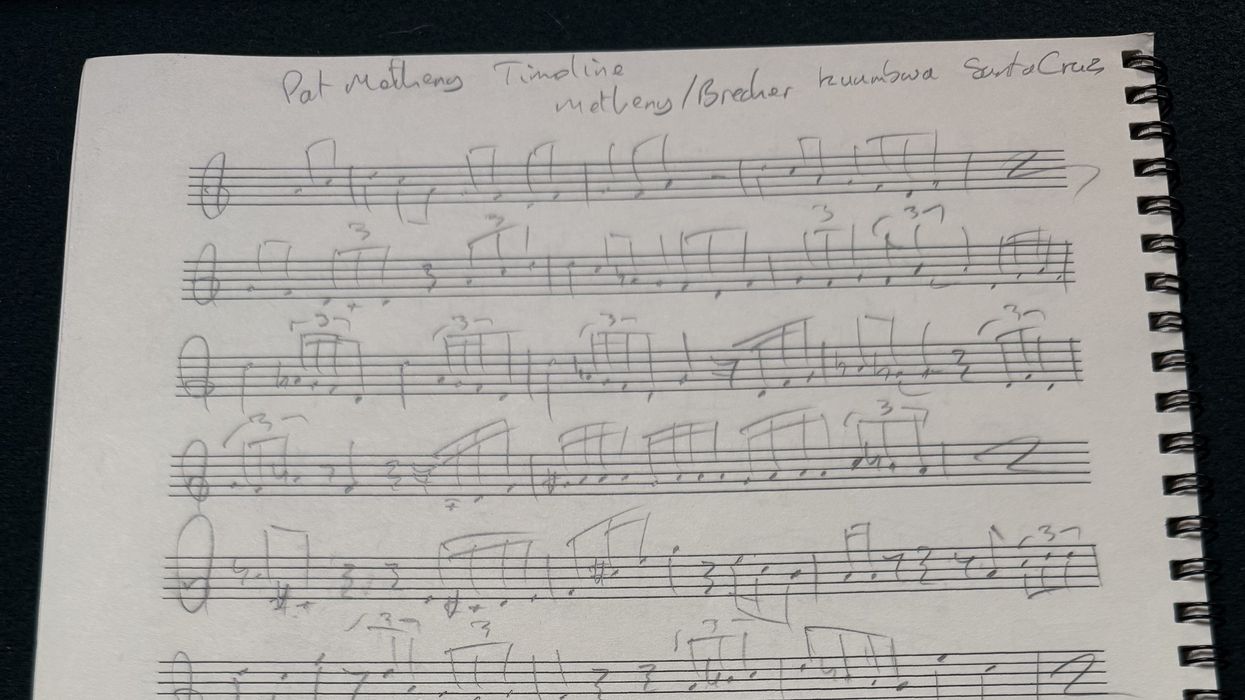


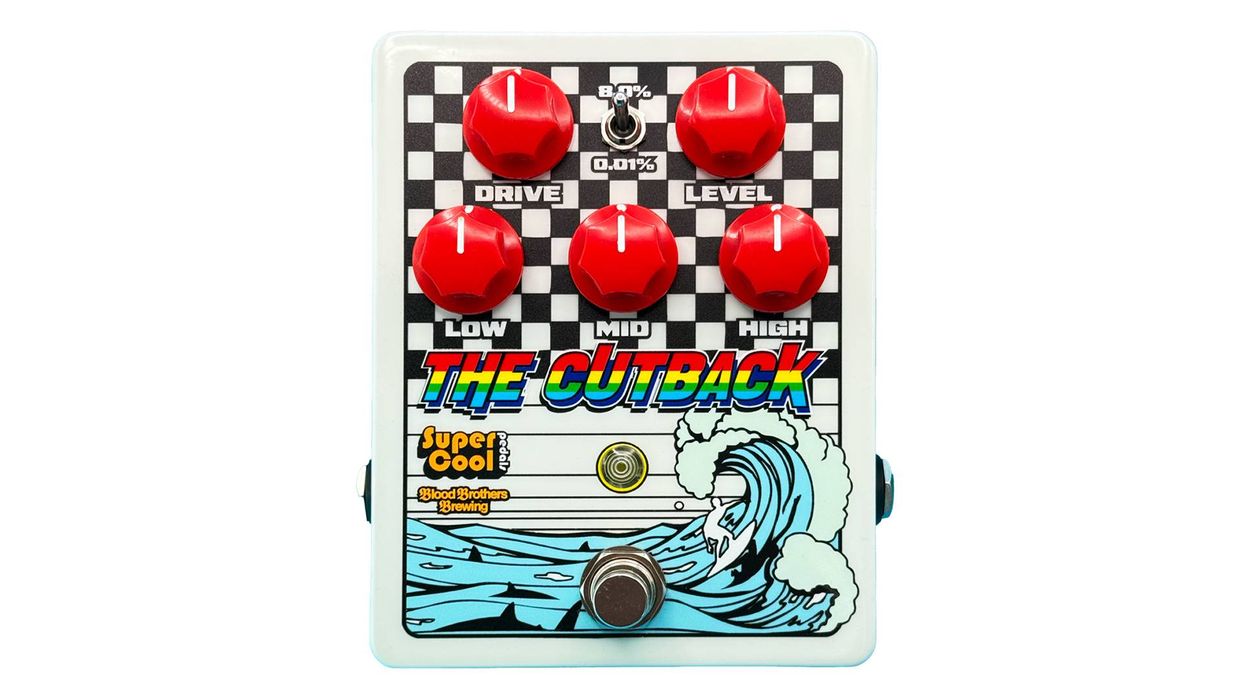

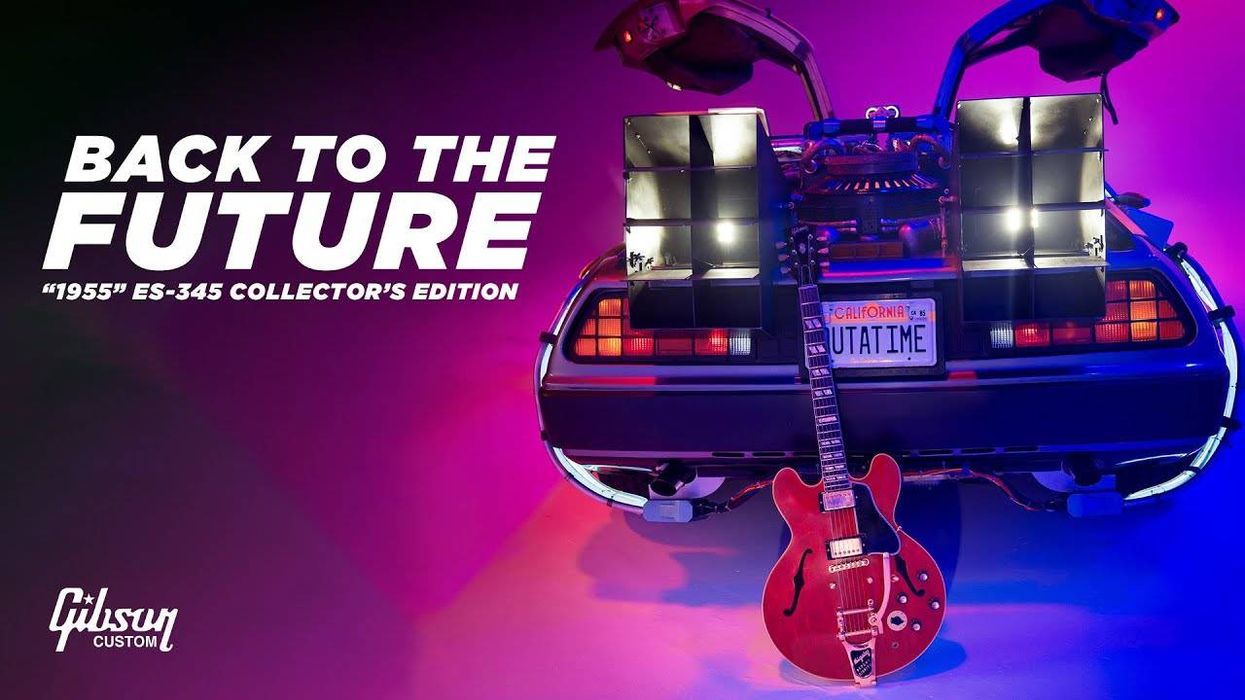
![Devon Eisenbarger [Katy Perry] Rig Rundown](https://www.premierguitar.com/media-library/youtube.jpg?id=61774583&width=1245&height=700&quality=70&coordinates=0%2C0%2C0%2C0)



























